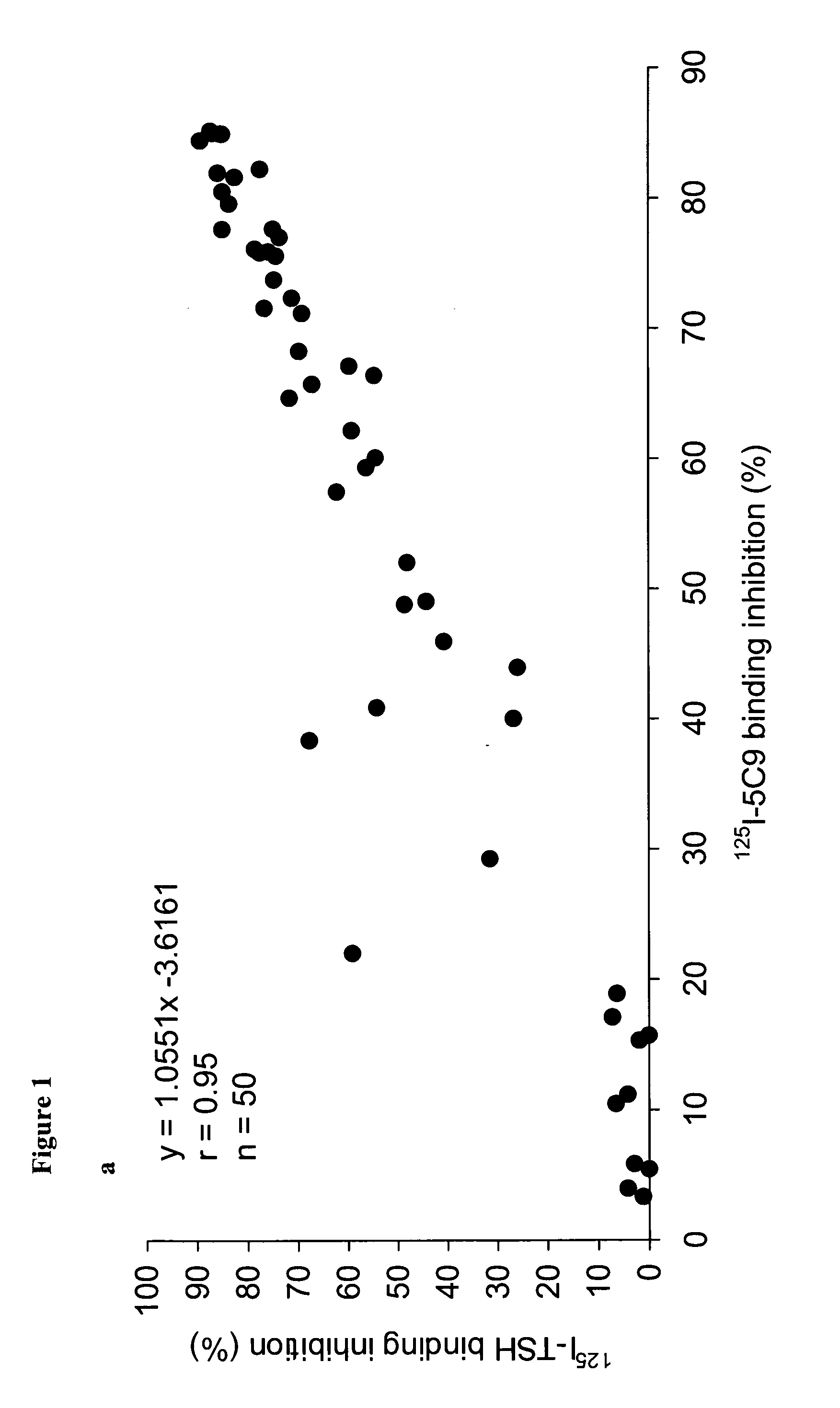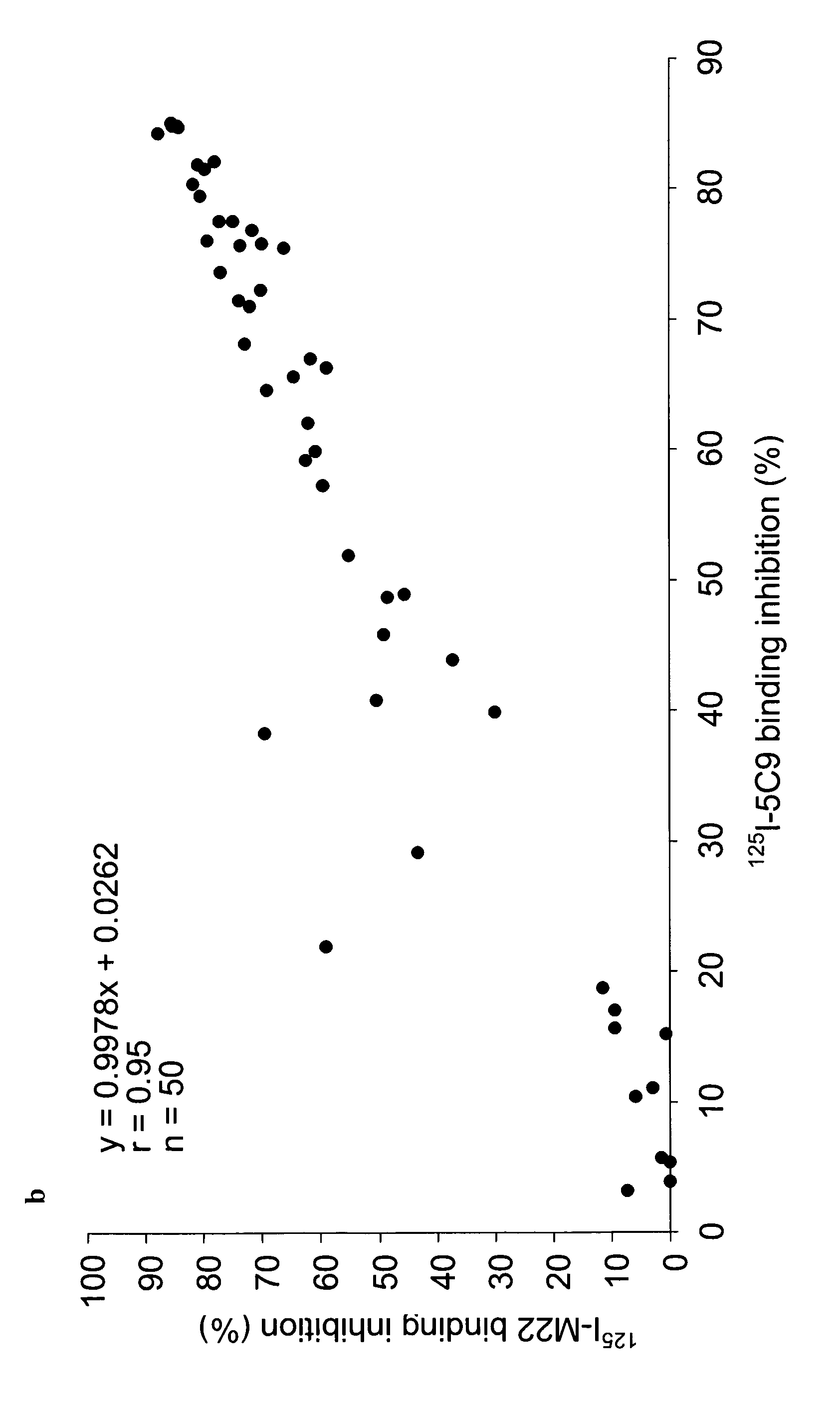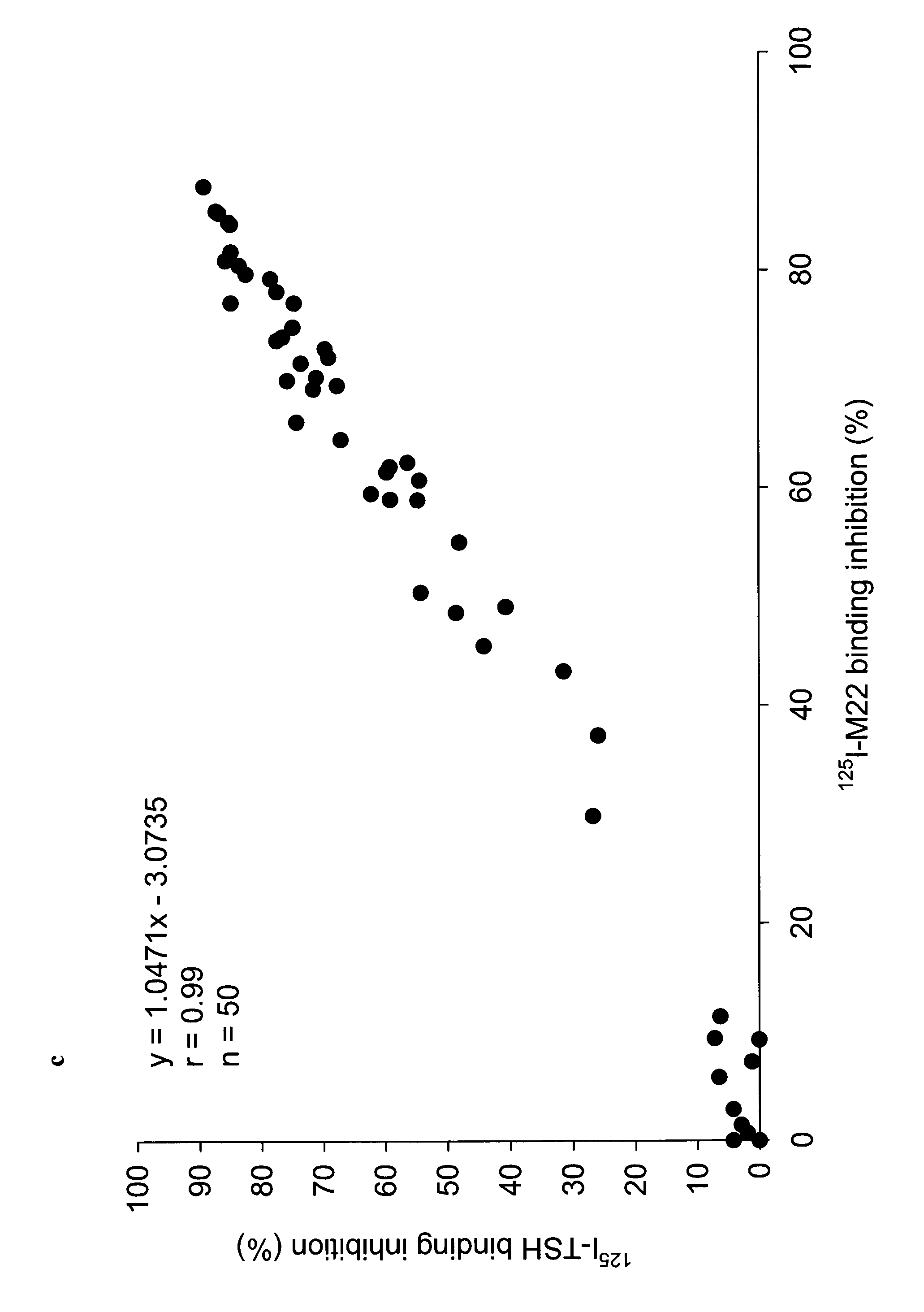Human monoclonal antibodies to the thyrotropin receptor which act as antagonists
a technology of thyrotropin receptor and human monoclonal antibodies, which is applied in the field of antibodies, can solve the problems of neonatal hypothyroidism and serious development consequences, the physiological feedback mechanism of thyroid function control mentioned above is not effective, and the detailed studies of how this type of autoantibody interacts with the tshr, and how their interactions with the tshr compare with those of the stimulating type of autoantibodies (such as m22) and th
- Summary
- Abstract
- Description
- Claims
- Application Information
AI Technical Summary
Benefits of technology
Problems solved by technology
Method used
Image
Examples
Embodiment Construction
Methods
[0068]Lymphocyte Isolation and Cloning of the Human Monoclonal TSHR Autoantibody 5C9 The monoclonal autoantibody 5C9 was isolated generally using the procedure described in WO2004 / 050708A2. Lymphocytes were first isolated from a blood sample collected from a patient with postpartum hypothyroidism and high levels of TRAbs (Local Ethical Committee approval was obtained). The lymphocytes were infected with Epstein Barr Virus (EBV) (European Collection of Cell Cultures—ECACC; Porton Down, SP4 0JG,UK) and cultured on mouse macrophage feeder layers as described in WO2004 / 050708A2. Immortalised lymphocytes secreting TSHR autoantibodies were fused with a mouse / human hybrid cell line K6H6 / B5 (ECACC) and cloned four times by limiting dilution to obtain a single colony. The presence of TSHR autoantibody in cell culture supernatants at different stages of cloning was detected by inhibition of 125I-labelled TSH binding to the TSHR (WO2004 / 050708A2). A single clone producing the TSHR autoa...
PUM
| Property | Measurement | Unit |
|---|---|---|
| pH | aaaaa | aaaaa |
| temperature | aaaaa | aaaaa |
| pH | aaaaa | aaaaa |
Abstract
Description
Claims
Application Information
 Login to View More
Login to View More - R&D
- Intellectual Property
- Life Sciences
- Materials
- Tech Scout
- Unparalleled Data Quality
- Higher Quality Content
- 60% Fewer Hallucinations
Browse by: Latest US Patents, China's latest patents, Technical Efficacy Thesaurus, Application Domain, Technology Topic, Popular Technical Reports.
© 2025 PatSnap. All rights reserved.Legal|Privacy policy|Modern Slavery Act Transparency Statement|Sitemap|About US| Contact US: help@patsnap.com



